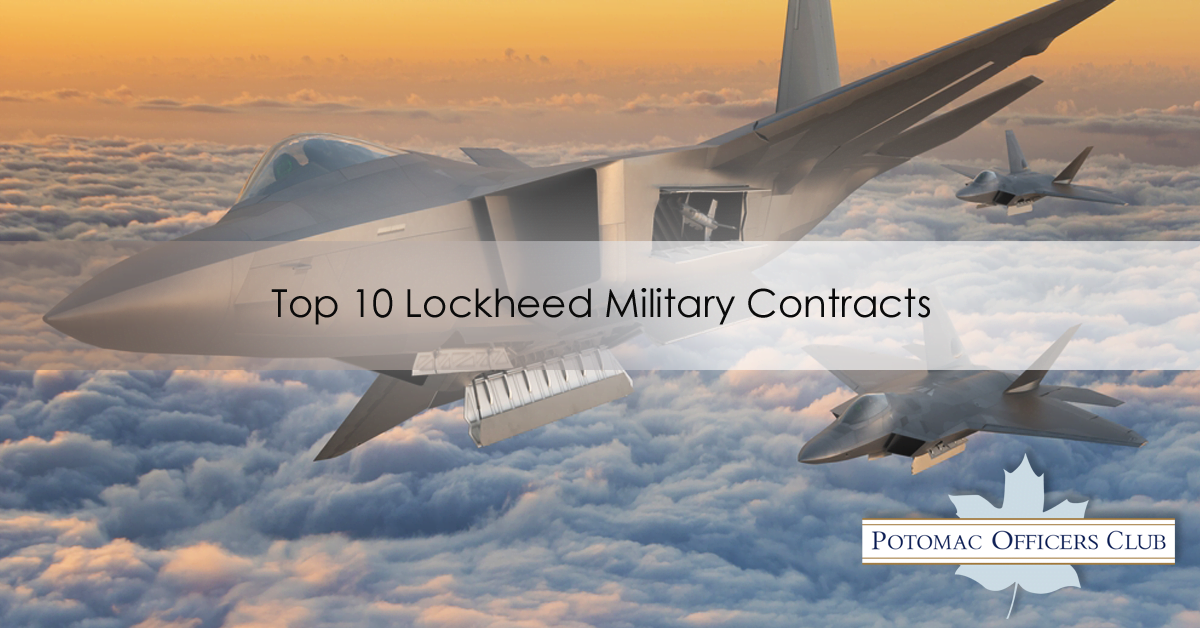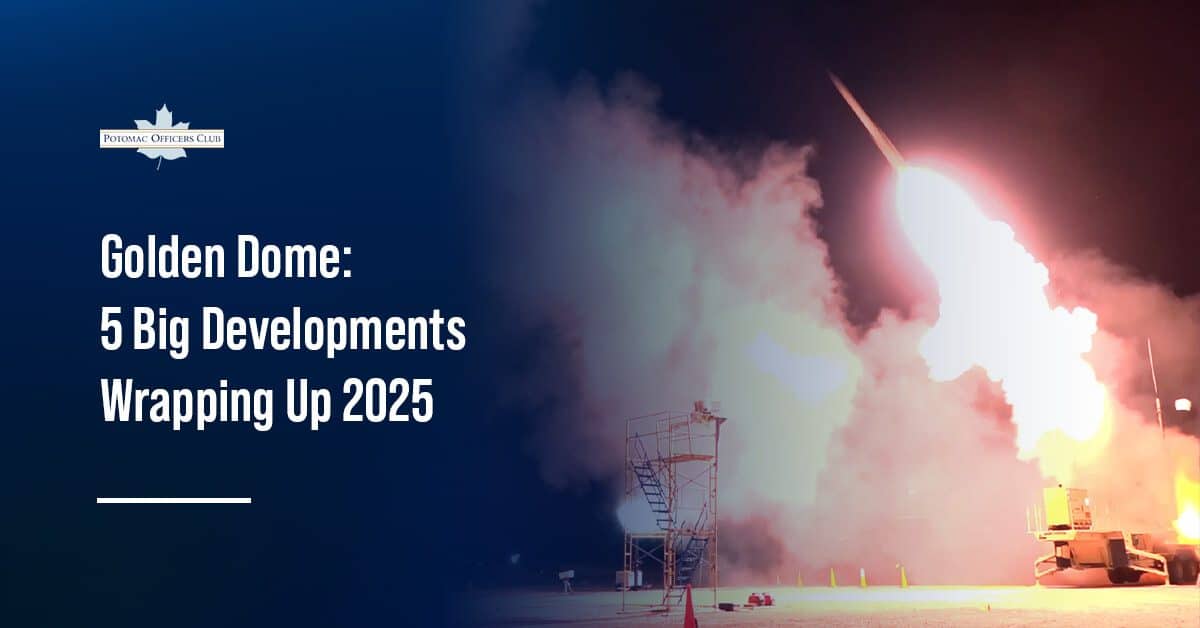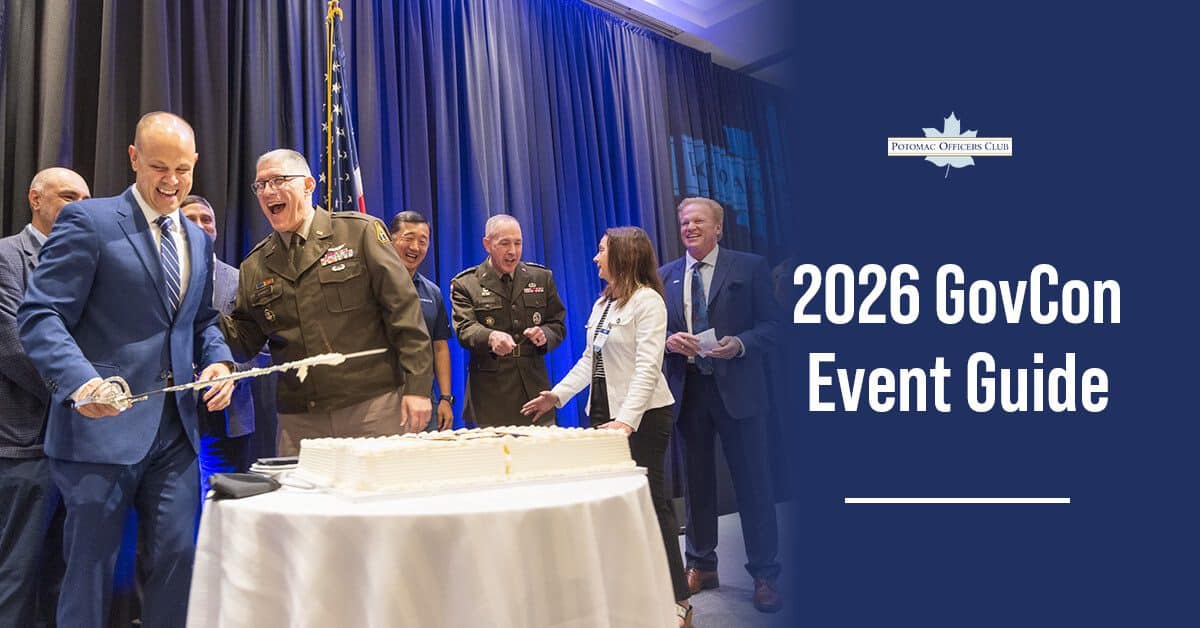
Top 10 Lockheed Military Contracts
Lockheed Martin is a global aerospace security and aerospace company that has been working with the Department of Defense for a long time. This federal defense contracting powerhouse has completed countless projects that helped boost the nation’s military power and security. In fiscal year 2020 they were hailed as the top defense contractor, receiving the lion’s share of the agency’s federal contracting dollars.
And this year, Lockheed Martin Corporation is in a position to win more government contracts. With the federal government increasing its defense spending this year to modernize the defense sector, huge projects are waiting for this defense contractor.
Who is the Lockheed Martin Corporation?
Lockheed Martin is a multinational security and aerospace conglomerate famed for its cutting-edge innovation in aerospace, arms, defense, information security, and technology.
As one of the most prominent players in the government contracting industry, Lockheed Martin Corp remains one of the top government contractors working closely with the defense department. Furthermore, Sikorsky Aircraft, a Lockheed Martin Company, is also one of America’s leading providers of military and rotary-wing aircraft.
What are the top 10 Lockheed military contracts?
The U.S. Air Force selected Lockheed Martin to develop, retrofit, integrate, and produce all C-130J Super Hercules aircraft variants. This sole-source billion-dollar contract is projected to last up to 10 years.
And naturally, these C-130J aircraft are needed to be properly maintained and updated to keep their edge over the rest. And that is why the Air Force awarded another $1.4B contract to Lockheed Martin to provide logistics and mission sustainment services for its C-130J transport aircraft. The Super Hercules fleet aids the defense department in transporting transport personnel and equipment in hostile areas. Its superior build allows the aircraft to carry more than 40,000 kg of cargo. This makes it capable of weather and disaster recon missions, airlift, firefighting, and aeromedical support.
As part of the modernization efforts of the Department of Defense (DoD), the U.S. Air Force awarded a $10.9 billion government contract to Lockheed Martin. Under this contract, the Maryland-based defense contractor will update and maintain the F-22 Raptor fighter aircraft.
Furthermore, Lockheed Martin will provide modernization hardware kits, upgrade the aircraft’s systems, and repair the hardware and software components of the fighter aircraft. And, the defense contractor will also provide logistics support under the Advanced Raptor Enhancement & Sustainment (ARES) program.
The Air Force tapped Lockheed Military to build America’s top-of-the-line fighter aircraft, the F-22 Raptor. This peerless fighter aircraft is critical to the department’s air-to-air and air-to-ground missions. And according to them, the F-22 Raptor’s warfighting capabilities remain unmatched by any known or projected fighter aircraft.

The technical expertise of Lockheed Martin is not limited to ground and air innovations—they are also famed for developing space tech projects. Their aerospace development services cater to several federal government agencies, from the U.S. Air Force to the National Aeronautics and Space Administration (NASA).
The U.S. Air Force selected Lockheed Martin to develop 22 GPS III satellites, with a projected lift-off in 2026. The federal agency will use these GPS satellites to modernize their military communications.
Sikorsky Aircraft, a subsidiary company of Lockheed Martin, snagged a $4.4 billion contract from the U.S. Army for the manufacturing and logistics of the 255 H-60M Black Hawk helicopters. These aircraft products will not only be delivered to the defense department’s service branch—it will also cater to foreign military sales customers.
This five-year defense contract requires the company to develop a fleet of 120 combat assault utility helicopters—and the department also has the option to request 135 more additional aircraft from the company.
The Black Hawk helicopters are one of the U.S. Army Aviation’s mission-critical vehicles, and Sikorsky Aircraft has been manufacturing these utility aircraft for the U.S. since the 1960s. These versatile helicopters are primarily used for MEDEVAC, internal & external lift, air assault, command control, search and rescue, special operations, and VIP transport.
Aside from producing top-of-the-line aircraft, Lockheed Martin is also one of the industry leaders in radar systems engineering. Last April, Lockheed Martin received a $3.3 billion contract for the full-rate production of AN/TPQ-53 radar systems.
The Maryland-based defense contracting giant will develop the AN/TPQ-53 radar systems, provide the necessary spare parts and support services, and assist in deploying these systems to its multiple customers.
The AN/TPQ-53 radar is a versatile radar system with a proven track record of surveillance, detecting rockets, artillery, identifying and tracking unmanned aerial systems, and other defense capabilities that have protected U.S. troops since 2010.
Lockheed Martin won an $870 million contract from the Naval Air Systems to expand the defense contractor’s scope of capability development support.
Under this contract, the aerospace manufacturer will integrate the mission and weapon systems development of all F-13 aircraft variants—including the flight-test hardware. Furthermore, Lockheed Martin will also spearhead the development of test services for the fleet’s takeoff, landing, short takeoff, and vertical landing.
The F-35 warfighters help America maintain its aerial dominance. Equipped with the latest stealth technology, supersonic speed, electronic warfare systems, and network-enabled communications, these aircraft are designed to be the best for years to come.
The United States Air Force awarded two contracts to Lockheed Martin Missiles and Fire Control to build anti-air and air-to-surface missile systems. Under this defense contract, Lockheed Martin will develop 400 units of Lot 19 Joint Air-to-Surface Standoff Missile – Extended Range (JASSM-ER) missiles, including containers, hardware spares, training & production preparation, and tooling & test equipment.
This sole-source contract, which was originally awarded in 2021, received a contract modification this 2022. Valued at $319 million, the Air Force procured an additional 308 more units of JASSM-ER missile systems.

As the lead defense contractor who was awarded a $7.2 billion contract to develop GPS Satellites, it comes as no surprise that Lockheed Martin won a $582 million contract to modernize the GPS Block IIR/IIR-M/III/IIIF satellite constellation.
Lockheed Martin will provide engineering services for the GPS Block IIR/IIR-M/III/IIIF satellites. The work stipulated in the contract includes program management, system administration, anomaly resolution, cybersecurity, and data collection.
The modernized Global Positioning System (GPS) constellation is designed to deliver the best results with the future in mind. Lockheed Martin engineered these satellites to increase its accuracy, upgrade its anti-jamming capabilities, and improve civilian connectivity. Furthermore, these new GPS constellation are engineered to accommodate tech upgrades for the ever-changing landscape.
The federal government tapped Lockheed Martin to provide logistical support for F-35 aircraft delivery to participating U.S. non-defense and defense departments. The Maryland-based government contractor will also be in charge of the logistics of the fleet for America’s Foreign Military Sales (FMS) customers.
Furthermore, this defense contract is not limited to delivering the said aircraft to its customers. Lockheed Martin will also conduct the necessary services to ensure a successful turnover of products, such as active request solutions, ground maintenance activities, automatic logistics information system operation and maintenance, depot activities, pilot training, and more.
The F-35 multi-mission aircraft is one of the world’s leading warfighters. With its cutting-edge stealth tech, mission & weapon systems, and supersonic feed, it boosts a country’s aerial defenses and warfighting capabilities.
Sikorsky Aircraft, a Lockheed Martin company, was selected by the U.S. Army to conduct maintenance support and perform modernization activities for its UH-60 Black Hawk helicopters.
As previously mentioned, Sikorsky Aircraft was also the long-standing defense contractor selected by the federal government to develop these utility aircraft, snagging a $4.4 billion deal just this June.
The UH-60 Black Hawks are the U.S. Army’s primary utility, transport, and assault aircraft. Its versatility makes it one of the cornerstones of countless aerial missions, such as MEDEVAC, special operations, and air assault.

How to become a small business defense contractor
Undeniable, Lockheed Martin is one of the prime examples of a thriving defense contractor. Banking on its year’s worth of experience, this powerhouse has completed countless projects that ensured that America would retain its edge over the rest.
The defense industry is not limited to government contracting giants, though. Small businesses can also join the fray—long as they fulfill the requirements.
What are the requirements to become a defense contractor?
-
Acquire the necessary security clearances
The contracts awarded in this industry are directly related to America’s security and defenses. And that is why defense departments enforce a strict selection process upon government contractors who want to do business with them.
There are a number of security clearances that a small business should undergo, and it varies depending on the federal agency. But, here are some of the major security factors that defense departments look at:
- Previous criminal convictions for the past year
- Patterns of committing criminal acts or behaviors
- Mental incapacity, which an official DoD mental health professional will evaluate
- Dishonorable discharge from the U.S. Armed Forces
- Poor credit history
- Repeated abuse of alcohol and illegal substances
-
Confirm small business eligibility
Small businesses are entitled to certain privileges, such as set-aside contracts. These contracts limit the competition to qualified small businesses to level out the playing field. There are also a number of small business assistance programs available—from grants to free training programs.
To know if a business satisfies the condition to become a small business, refer to this Size Standards guide by the Small Business Administration (SBA).
-
Register at SAM.gov
The System for Award Management website houses all federal services needed by a government contractor—including entity registration.
To register a business as a government contractor, a number of requirements must be fulfilled. Here are some of the major requirements:
Core Business Information
SAM.gov will ask business owners to supply their company’s basic information, such as physical mailing address, founding date, and Taxpayer Identification Number (T.I.N).
Furthermore, the website will also ask business leaders to supply their company’s CAGE / NCAGE Code. The CAGE Code, which is reserved for business within the U.S. and its territories, is provided after a business completes its SAM.gov registration. On the other hand, businesses outside the U.S. and its territories should apply for their NCAGE Code here. The NCAGE request should be filed before their SAM.gov application.
Financial Information
The federal government will ask for a business’ relevant financial information, such as their preferred payment method. The information supplied in this section will also be used to set up Electronic Funds Transfer—the government’s primary method of payment.
Unique Entity ID
Replacing the DUNS Number, the Unique Entity ID (UEI) is the new 12-character code used by federal agencies to identify entities.
NAICS Code
This is another set of codes that the federal government uses to identify business entities. But, NAICS Codes are primarily used to distinguish the industries of business. Businesses can easily obtain their NAICS Codes through this self-service website.
The website contains the entire list of NAICS Codes, each corresponding to a specific industry. Business leaders only have to select which among the codes best describes their company. If a business offers a variety of goods and services, it can possess more than one NAICS Code.
How to win defense contracts?
-
Learn the rules and regulations of the defense agency
The Federal Acquisition Regulation (FAR) is the playbook of every federal executive agency. FAR contains all primary regulations that regulate the government’s acquisition and procurement of goods and services.
On the other hand, the Department of Defense (DoD) and related agencies use DFARS, or Defense Federal Acquisition Regulation Supplement. This book of regulations supports the nation’s thrust in ensuring the strength, stability, and adaptability of federal defenses through procurement.
Furthermore, aspiring government contractors should also read up on the particular regulations and requirements of their target defense agency.
-
Always be on the lookout for opportunities to bid on government contracts
Government agencies publish contract opportunities in one place—SAM.gov. So to ensure that there will be no missed contract opportunities, it is prudent to have a dedicated staff who will consistently check on it. This person will keep tabs on the website, and other relevant channels, such as the target defense agency’s webpage.
For subcontracting opportunities for defense contracts, businesses can tune in to SubNet. Managed by the Small Business Administration, SubNet is a dedicated platform for federal subcontracting opportunities. Small businesses who want to know how to become a subcontractor should refer to this beginner’s guide.
Another way of staying ahead of the curve is to learn how to predict opportunities for government contracts. This forecast tool by the General Services Administration (GSA) can help with that. This tool will show the planned government contracts in the near future so government contractors can prepare for them better. It gives the contractors sufficient knowledge and information about the contract as well.
-
Learn how to write a contract bid
A contract bid can mean the difference between a success and a failure—this is how crucial it is. Here are some tips on how government contractors can increase their contract win rate:
Careful review the RFP
The RFP, or Request For Proposal, is a document issued by a federal agency when they are seeking proposals for their planned procurement of goods and services. This contains all the necessary details about the project and is divided into 13 sections.
All sections of the RFP are essential, but government contractors should pay closer attention to these sections: B – Supplies or Services and Price/Costs, C – Statement of Work, L – Instructions, Conditions, And Notices To Offerors, and M – Evaluation Criteria.
Stick to the instructions stated in the RFP
Contracting officers scrutinize every proposal that they receive. So it pays to be extremely detail oriented when crafting a contract proposal. Section L of the RFP contains all the instructions for the proposal, from the document’s format to the assigned representative where the proposals will be submitted.
Create an outline for the proposal
Having an outline before writing the proposal can help ensure that the proposal is aligned with the federal agency’s goals and objectives. This will also help avoid missing out on crucial information that should be included in the proposal.
Price competitively
The proposal’s value should not be too high or too low—it should be justifiable. The federal government is looking for proposals where the public’s money will be used effectively and efficiently.
Review the contract proposal before submitting
It is unavoidable to miss a spelling mistake or two. But, neglecting to read over the proposal one last time before submitting—it will leave a bad impression on the contracting officer.
To avoid this type of mishap, it is advisable to have a seasoned contract writer and federal contracting expert go over the proposal.
Be prepared to answer questions
Contracting officers may have follow-up questions regarding the proposal. Keep the lines open and be prepared to answer any question about it.
For a more in-depth discussion about writing a contract proposal, check out this guide.
Summary
The Lockheed Martin Corporation is truly one of the hallmarks of successful defense contractors. Their deep and diverse portfolio in federal defense contracts is a testament to how much impact they have in boosting the nation’s defenses—from ground to aerospace. And truly, Lockheed Martin has set an example to aspiring small business defense contractors who want to do business with the federal government.

Category: Articles




